Defensive Driving Observation
When you check in the mirrors, just looking is not enough. You must act sensibly on what you see.
You must make a mental note of the
- speed
- behaviour
- possible intentions
of any other road user.
If you're not observing effectively, you can't assess a traffic situation correctly.
At junctions, there's no point in just looking if your view is obstructed- for example, by parked vehicles. You must also move carefully into a position where you can see without emerging into the path of oncoming traffic (Creep & Peep).
Look
Assess
andDecide
before youAct
That's what effective observation is all about.
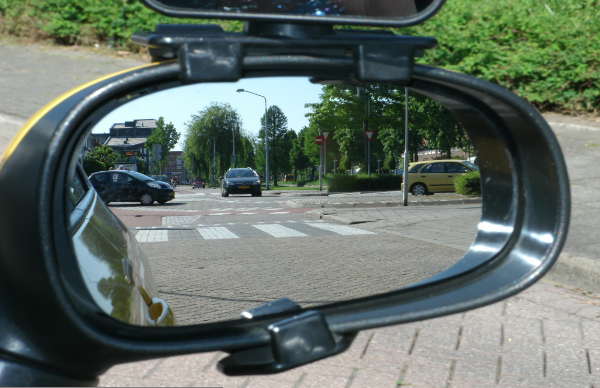
0bserving What's Ahead
A skilful driver constantly watches and interprets what's happening ahead.
DO
Always drive at such a speed that you can stop safely within the distance you can see to be clear.
A good driver will constantly scan the road ahead and to the side and, by frequent use of the mirrors, be aware of the situation behind.
DON'T
Drive beyond the limits of your vision.

Approaching a bend
Ask yourself
- Can I see the full picture?
- How sharp is it?
- Am I in the right position?
- Is my speed right?
- What might I meet?
- Could I stop if I had to?
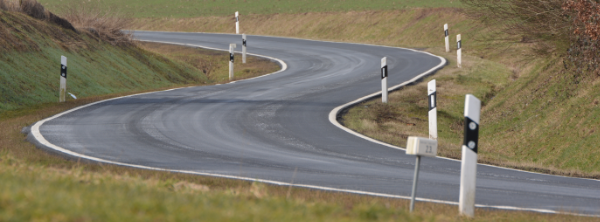
Approaching a junction
Ask yourself
- Have I seen the whole junction?
- Can other drivers see me?
- Am I sure they have seen me?
- Have I got an escape route if they haven't?
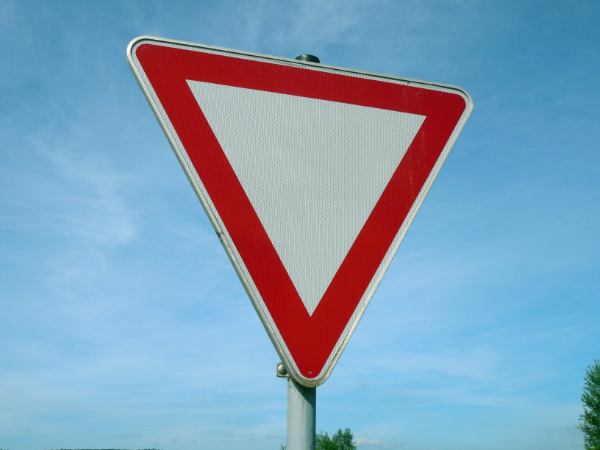
Defensive Driving Zone of Vision
Your zone of vision is what you can see as you look forward and to the side from your vehicle. As you approach a junction, your zone of vision onto the other road usually improves.
You may need to get very close before you can look far enough into another road to see if it's safe to proceed. The last few feet are often critical.
Sometimes parked vehicles restrict your view so much that you need to stop and inch forward for a proper view before you emerge (Creep & Peep).
- Look in every direction before you emerge.
- Keep looking as you join the other road.
- Be ready to stop.
- Use all the information available to you- look through the windows of parked vehicles.
- Use the reflections in shop windows to observe oncoming traffic.
Screen pillar obstruction
The windscreen pillars can cause obstructions to your view of the road. You should be aware of this effect, particularly when
- approaching junctions and bends
- emerging from junctions

Other road users
It can be difficult to see some other road users especially when you are emerging from a junction. Those who are palticulay at risk are
- pedestrians
- they frequently cross at a junction and often find it difficult judge the speed and course of approaching traffic
- cyclists
- they can be difficult to see because they can easily be obscured by trees and other objects, especially they are riding close to the side of the road. They might be approaching at a higher speed than you expect
- motorcyclists
- like cyclists they are often less easy to see than other motor vehicles.
Think Once
Think Twice
Think bike!
and make sure it's safe to proceed.
Remember
Never rely solely on a quick glance- give yourself time to take in the whole scene.
If another vehicle or a pedestrian is not in your zone of vision, you're not usually in theirs.
Making eye contact with other road users helps you to know whether they have seen you.

Defensive Driving Observing traffic behind you
You should always know as much as you can about the traffic behind you.
Before you move off, change direction or change speed, you must know how your action will affect other road users.
You must also be aware of traffic likely to overtake.
Using The Mirrors
Using your mirrors regularly and sensibly enables you to keep up to date with what's happening behind, without losing touch with what's going on in front. They must be clean and properly adjusted to give a clear view.
When should you use your mirrors?
Well before you signal your intention or make any manoeuvre. For example, before
- moving off
- changing direction
- turning right or left
- overtaking
- changing lanes
- slowing or stopping
- opening a car door.
A quick sideways glance
A quick sideways glance is sometimes helpful. For example, to check your blind spot
- before you change lanes on a motorway or dual carriageway
- where traffic is merging from the left or right.
Looking round
You should look round to check your blind spot before moving off.
However, looking round on the move can be dangerous, particularly when driving at high speeds. In the time you take to look round, you lose touch with what's happening in front.
Remember that a vehicle travelling at 70mph covers about 30 metres (about 100 feet) per second. Even if it only takes half a second to look round, you will still have travelled 15 metres (about 50 feet).
Just looking is not enough!
You must act sensibly on what you see, and take note of the speed, behaviour and possible intentions of traffic behind.
Another driver's blind spot
Avoid driving in another driver's blind spot for any longer than necessary.

Defensive Driving Approaching Green Traffic Lights
Ask yourself
- How long have they been on green?
- Are there many vehicles already waiting at either side of the junction? (If there's a queue, the lights are probably about to change.)
- Do I have time to stop?
Can the vehicle behind me stop?
If it's a large goods vehicle, it might need a greater distance to pull up.
- try to beat the traffic signals by accelerating
- leave it until the last moment to brake. Remember, harsh braking causes skids.
Don'T
Remember
Another driver might anticipate the change of signals by accelerating away while the lights are still showing red-and-amber.
A combination of these actions by drivers often results in a collision that could be avoided.
Traffic signals not working
Where traffic signals are not working, treat the situation as you would an unmarked junction and proceed with great care.

Defensive Driving Signalling
Signal to warn others of your intention and help other road users.
Road users include
- drivers of following and oncoming vehicles
- motorcyclists
- cyclists
- pedestrians
- crossing supervisors
- police directing traffic
- horse riders
Signal clearly and in good time.
Give only the signals illustrated in The Highway Code.
Direction indicator signals
Help other road users to understand your intention by
- signalling in good time so that they have time to see and react to your signal
- positioning yourself correctly and in good time for the manoeuvre you intend to make.
Conflicting signals
A signal with the left indicator means 'I am going to turn left' OR 'I am going to stop on the left'.
Avoid using your left indicator before a left-hand junction if you intend to stop on the left just after the junction. A driver waiting at that junction might think you're turning left and drive out into your path.
- Wait until you've passed the junction, then indicate that you intend to stop.
- Reduce speed by braking gently, so that your brake lights warn following drivers.
If you are waiting to emerge and a vehicle seems to be indicating its intention to turn left, wait until you can see that it is actually going to turn left before you pull out. Otherwise you might drive into its path.
Remember that roundabouts often have several lanes of traffic with vehicles changing speed and direction. It's important that you give any signals correctly and at the right time.
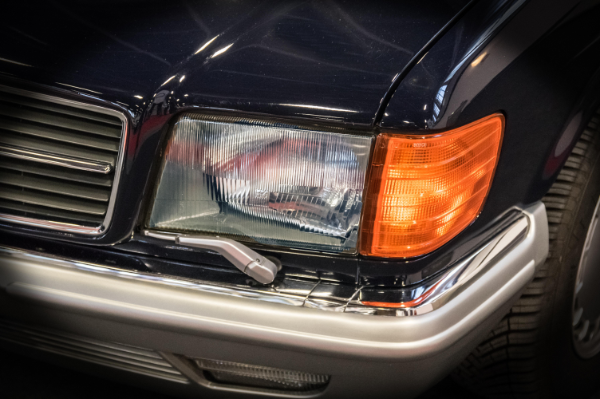
Defensive Driving Warning Signals
Flashing with headlights
Use only as an alternative to the horn to remind others that you're there.
Don't flash at anyone to go ahead or turn.
If someone flashes their headlights at you
Before you act on the signal, make sure
- you understand what they mean
- it's you they're signaling to
- that they are not just warning you of their presence.
Never assume it's a signal to proceed.
Ask yourself
- What's the other driver trying to tell me:
- Stop?
- Go?
- Turn?
- Thank you?
- If I move, will it be safe?
- Is the signal intended for me or another road user?
- Am I causing a hold-up by staying where I am?
- Is the other driver really signaling, or were those headlights flashed accidentally?
The consequences rest with you.
On motorways and dual carriageways
If you think a warning is necessary, flashing your headlights is usually better than using your horn.
Be alert for such warnings from other drivers.
If a driver behind starts flashing their headlights and driving dangerously close
- stay calm
- don't be intimidated.
Only move back to the left as soon as there's a safe gap and you have checked you can do so without cutting in on vehicles in the left-hand lane.
Remember
Moving off safely and changing course is your responsibility.
The only official meaning for the flashing of headlights is to let other road users know you're there - the same as using the horn.
Act sensibly.
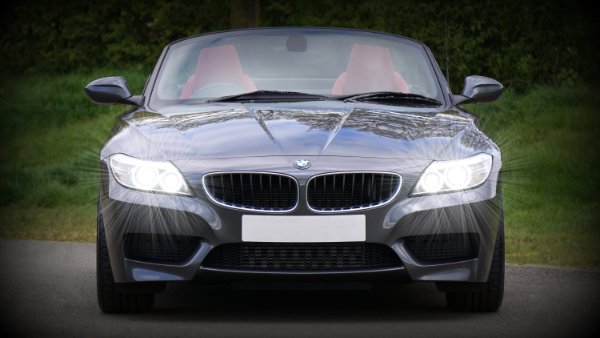
The Horn
There are a few situations where you'll need to use the horn.
Using the horn doesn't
- give you the right of way
- relieve you of your responsibility to drive safely.
Sound it only if
- you think someone may not have seen you
- you want to warn other road users of your presence, for example at blind bends or junctions.
Never use your horn as a rebuke or to attract someone's attention.
Don't use your horn
- when stationary
- when driving at night (11.30 pm - 7.00 am in a built-up area,
- unless a moving vehicle poses a danger.
Remember
- Avoid using a long blast on the horn which can alarm pedestrians.
- If a pedestrian doesn't react to a short signal on the horn, it could mean they're deaf.

